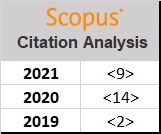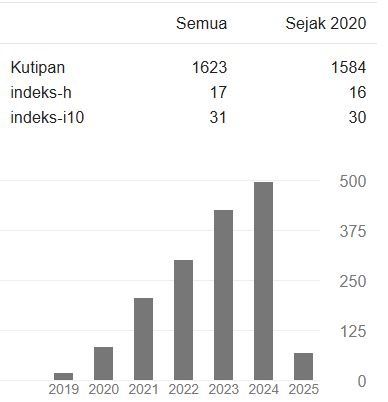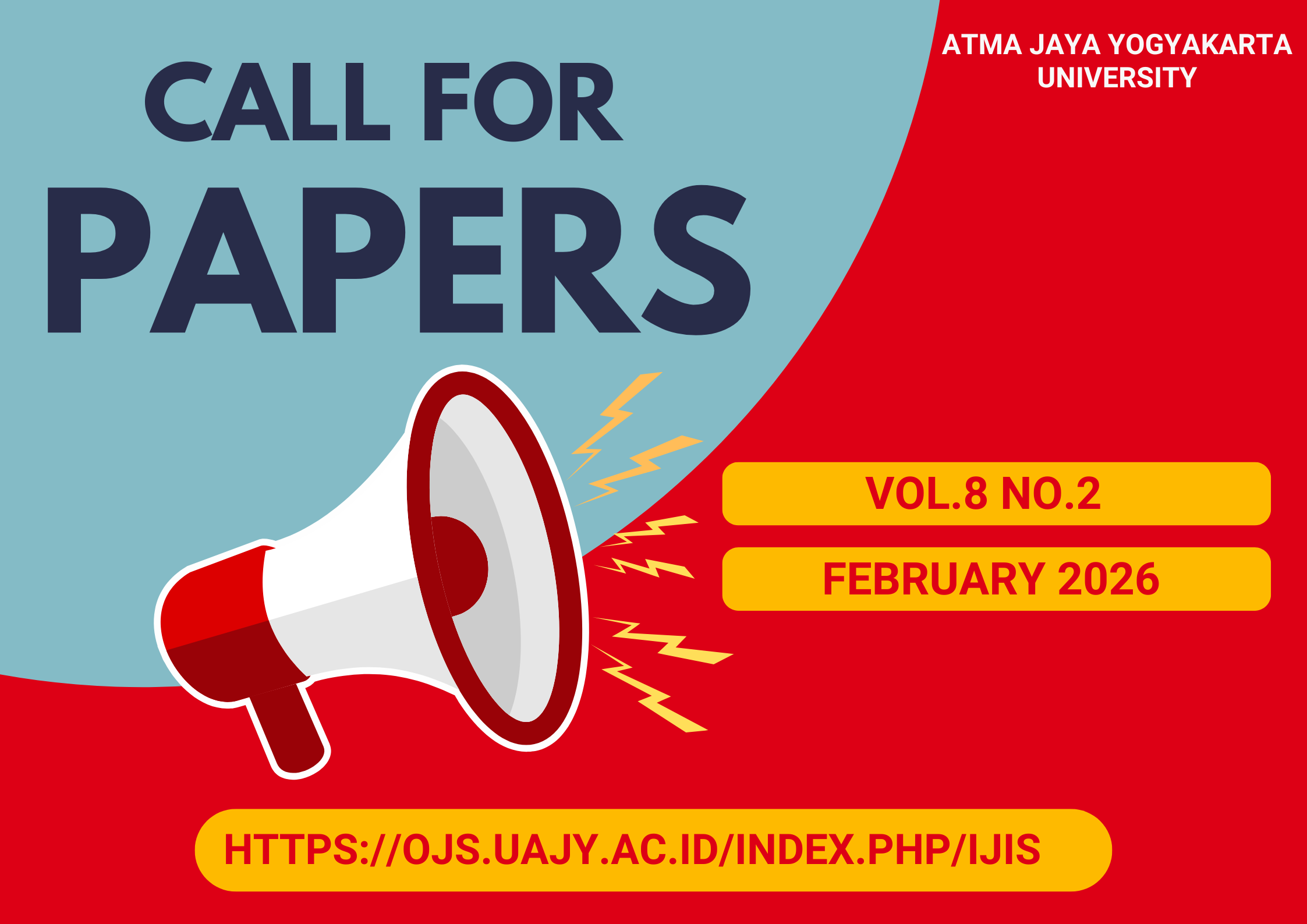Digital Simulation as a Design Method of Artificial Lighting for Prayer Rooms
DOI:
https://doi.org/10.24002/ijis.v4i1.4392Keywords:
digital simulation, prayer rooms, lighting, churchAbstract
This article aims to describe the results of the lighting design for the prayer room using a simulation method to answer the needs of function and ambience. In general, the lighting design for prayer rooms does not use an integrated approach. A common problem faced by prayer rooms, especially churches and chapels, is too glaring or too dim in some cases. The results of the community service activities in the form of lighting planning for the Church of Santa Theresia Sedayu and Chapel of SMA de Britto with the digital simulation method expect to provide an overview of designing lighting with a more measured method that can meet the needs of the ambience. Lighting simulation in both cases uses DIALux Evo software. The simulation result shows that the lighting design meets lighting standards and is able to provide a sacred atmosphere. Concerning the study, solving lighting problems with the digital simulation as the method is more scalable and can meet the ambience needs. Field measurements of the lighting design results can be carried out in the future to measure the simulation's level of achievement and validation.References
J. D. Intan and L. S. Arifin, “Pengaruh Pembukaan Daylighting Simbolik Terhadap Kenyamanan dan Persepsi Jemaat di Gereja,” J. eDIMENSI Arsit., vol. 7, no. 1, pp. 673–680, 2019, [Online]. Available: http://publication.petra.ac.id/index.php/teknik-arsitektur/article/view/9324/8405.
D. S. M. Santoso, “Pengaruh Gaya Desain Gotik dan Kolonial Belanda Terhadap Efek Pencahayaan Alami pada Gereja Katolik Hati Kudus Yesus di Surabaya,” Dimens. Inter., vol. 12, no. 1, pp. 16–22, 2014, doi: 10.9744/interior.12.1.16-22.
S. J. Pelealu, Sangkertadi, and J. O. Waani, “Pencahayaan Buatan dalam Gereja Katolik,” J. Arsit. DASENG, vol. 6, no. 1, pp. 53–62, 2017, [Online]. Available: https://ejournal.unsrat.ac.id/index.php/daseng/article/view/16766.
A. C. A. Petriana, M. Wibowo, and S. M. Frans, “Perancangan Interior Gereja Bethany di Malang,” J. INTRA, vol. 6, no. 2, pp. 504–518, 2018, [Online]. Available: http://publication.petra.ac.id/index.php/desain-interior/article/view/7314/6629.
D. A. N. Annisa and K. K. Lestari, “Pengaruh Pemilihan Jenis dan Warna Pencahayaan pada Suasana Ruang Serta Kesan Pengunjung Kafe,” Sinektika J. Arsit., vol. 18, no. 1, pp. 78–84, 2021, doi: 10.23917/sinektika.v18i1.13325.
Irwansyah, “Analisis Tata Pencahayaan Interior Wildlife Museum & Gallery Rahmat Inernasional di Medan,” J. Proporsi, vol. 4, no. 1, pp. 50–61, 2018, doi: 10.22303/proporsi.4.1.2018.50-61.
M. S. Kristian, Leonardo, and E. A. Halim, “Pengaruh Cara Distribusi Pencahayaan Buatan Pada Kenyamanan Bercengkerama Pengunjung Kafe,” Serat Rupa J. Des., vol. 2, no. 2, pp. 148–162, 2018, doi: 10.28932/srjd.v2i2.776.
E. Setyaningsih, J. Pragantha, and R. A. Mangkuto, “Simulasi Pencahayaan Terowongan Tomang Siang Hari Menggunakan Lampu LED,” TESLA J. Tek. Elektro, vol. 20, no. 1, pp. 7–15, 2018, doi: 10.24912/tesla.v20i1.2815.
S. S. Azmi and W. Iyati, “Tata Cahaya Alami Gedung Layanan Bersama Universitas Brawijaya Malang,” J. Mhs. Jur. Arsit., vol. 6, no. 3, pp. 1–9, 2018, [Online]. Available: http://arsitektur.studentjournal.ub.ac.id/index.php/jma/article/view/647/565.
A. Hangga, A. M. Nisa, D. Pratama, and M. Apriliyanto, “Simulasi Pencahayaan Buatan untuk Ruang Kelas dengan Tipe Armature TL LED dan Bohlam LED,” J. Tek. Elektro, vol. 11, no. 2, pp. 61–66, 2019, doi: 10.15294/jte.v11i2.26902.
Atthaillah, S. Wijayanti, and S. M. Hassan, “Simulasi Desain Fasad Optimal Terhadap Pencahayaan Alami Pada Gedung Prodi Arsitektur Universitas Malikussaleh,” EMARA Indones. J. Archit., vol. 4, no. 1, pp. 21–29, 2018, doi: 10.29080/emara.v4i1.228.
C. N. Ayum and W. Iyati, “Tata Cahaya Ruang Dalam Perpustakaan Proklamator Bung Karno Blitar,” J. Mhs. Jur. Arsit., vol. 6, no. 3, pp. 1–8, 2018, [Online]. Available: http://arsitektur.studentjournal.ub.ac.id/index.php/jma/article/view/586/523.
C. Susilawati and E. N. Yulita, “Tata Cahaya pada Ruang Baca Balai Perpustakaan Grhatama Pustaka Yogyakarta,” J. Mhs. Jur. Arsit., vol. 6, no. 1, pp. 1–10, 2018, [Online]. Available: http://arsitektur.studentjournal.ub.ac.id/index.php/jma/article/view/509/480.
Fathimah, J. Thojib, and M. S. Adhitama, “Rekayasa Tata Cahaya Alami pada Ruang Laboratorium (Studi Kasus: Fakultas Teknik Universitas Brawijaya),” J. Mhs. Jur. Arsit., vol. 5, no. 1, pp. 1–9, 2017, [Online]. Available: http://arsitektur.studentjournal.ub.ac.id/index.php/jma/article/view/326/314.
A. Mandala, “Desain Ruang dan Pencahayaan Buatan untuk Mendukung Suasana Kontemplasi pada Gereja Katolik Regina Caeli, Jakarta,” ATRIUM, vol. 1, no. 2, pp. 181–195, 2015, doi: 10.21460/atrium.v1i2.48.
G. Małgorzata and S. Dorota, “Some Aspects of Artificial Lighting in Churches,” 2003. http://lumen.iee.put.poznan.pl/luxjunior/Gorczewska-Ilm2003.pdf (accessed Feb. 26, 2021).
D. Holmes, Lighting for the Built Environment: Places of Worship. Lavenham, UK: The Lavenham Press, 2014.
T. de Rubeis, I. Nardi, M. Muttillo, S. Ranieri, and D. Ambrosini, “Room and window geometry influence for daylight harvesting maximization – Effects on energy savings in an academic classroom,” Energy Procedia, vol. 148, pp. 1090–1097, 2018, doi: 10.1016/j.egypro.2018.08.050.
F. Tanumihardjo, “Pemahaman Pengaturan Warna Pada Foto Interior Pengaturan White Balance di Kamera pada foto ruangan,” J. Vis., vol. 12, no. 2, pp. 19–27, 2017, doi: 10.24912/jurnal.v12i2.2124.
J. Livingston, Designing With Light: The Art, Science and Practice of Architectural Lighting Design. Hoboken, NJ: John Wiley & Sons, Inc., 2014.
S. Anisah and A. D. Tarigan, “Efektivitas Pemamfaatan Lampu Penerangan Hemat Energi pada Rumah Tinggal Masyarakat,” JESCE, vol. 3, no. 2, pp. 82–93, 2020, doi: 10.31289/jesce.v3i2.3270.
B. B. Agam, Yushardi, and T. Prihandono, “Pengaruh Jenis dan Bentuk Lampu terhadap Intensitas Pencahayaan dan Energi Buangan Melalui Perhitungan Nilai Efikasi Luminus,” J. Pendidik. Fis., vol. 3, no. 4, pp. 384–389, 2015, [Online]. Available: http://jurnal.unej.ac.id/index.php/JPF/article/view/1435.
A. Mandala, “Lighting Quality In The Architectural Design Studio (Case Study:Architecture Design Studio at Universitas Katolik Parahyangan, Bandung, Indonesia),” IOP Conf. Ser. Earth Environ. Sci, vol. 238, p. 12032, 2019, doi: 10.1088/1755-1315/238/1/01203
Downloads
Published
How to Cite
Issue
Section
License
Indonesian Journal of Information Systems as journal publisher holds copyright of papers published in this journal. Authors transfer the copyright of their journal by filling Copyright Transfer Form and send it to Indonesian Journal of Information Systems.

Indonesian Journal of Information Systems is licensed under a Creative Commons Attribution-NonCommercial 4.0 International License.

















